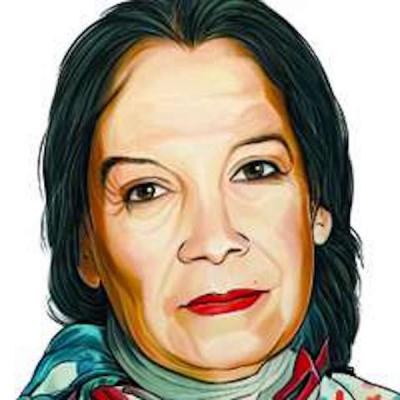
Fadwa: A Tale of a Palestinian Poetess (1999)
Origin: Unknown | Documentary | Director: Liana Badr | 52 minutes
Fadwa
Liana Badr docu 1999 52 min.
Liana Badr's film, Fadwa (1999), which recounts the life story of the
Palestinian national poet, Fadwa Tukan, is an example of the growing
tendency in Palestinian cinema to progress more swiftly and clearly from
the starting point of social differences and the gap between the times to
the final destination - national unity and restoration of the past.
The film opens with a journey through Nablus, its neighbourhoods, the
mountains around it, and the three religions that found a place there. It
utilizes conventions that conceive of Nablus as a symbol of the Palestinian
peopled open heart, its tradition, its rich past, identifying, finally, the
town where the woman loves. The poet's narrative is one of oppression. At
the age of twelve, as punishment for receiving a flower from a boy several
years her senior, she was taken out of school and kept at home. The film
describes how she overcame this oppression with the help of her brother,
the poet Ibrahim Tukan, who encouraged her to write poems. Fadwa Tukan's
story, like that of the women in Fertile Memories, is a private tale of a
woman rendered marginal in a patriarchal society. However, unlike the women
in My Very Private Map she is rescued from this marginality when she
becomes a national poet, and when she is associated with the city of Nablus
and the Tukan family's guesthouse, the Diwan, where she is filmed. The
shots establish her in static poses under the curving arches of the house,
next to the stone walls, among the clay pots, beyond the windows and iron
latticework, under the adorned ceiling. Thus, she seems an integral part of
this historic house that serves as a commemoration and a symbol of a long-
lost world.
The film focuses on the details, granting them a symbolic dimension, A
black scarf hanging from a branch of a tree, a familiar emblem of mourning,
foreshadows the story of the brother's death. a carnation floating in the
water and gradually changing from its original white colour to red,
symbolizes the death of a warrior that the poet has known. Other
significant derails include a bouquet of flowers beside a record album,
indicating her love of music. a pair of doves on the roof, suggesting her
dream of becoming a bird. and two lemons on a saucer with a daffodil,
signifying the Palestinian poets living within the Israeli borders, with
whom she met after 1^67. These symbols associate national aspirations and
grief with private hopes and mourning, constructing all of these as 3 kind
of oriental ornamentation reminiscent of murals, embroidery, and pottery
decorations, an ornamentation that revives she old Arab tradition of a
female harem, steeped in scents and colours. Michel Khleifi, in Wedding m
Galilee, uses this feminine adornment in order to deconstruct the national
masculine unity. Liana Badr uses it to redefine woman as an allegory of the
Palestinian and Arab nation, of its tradition, of lost Palestinian richness
and wholeness. Palestinian and Arab critics often ignored the multi-
dimensional women characters in Khleifi's films and referred to them as
national symbols. The new cinema actually realizes this interpretation more
than Khleih's own movies bad, since [he latter features women characters
who are too complex to be reduced to this one-dimensional role.